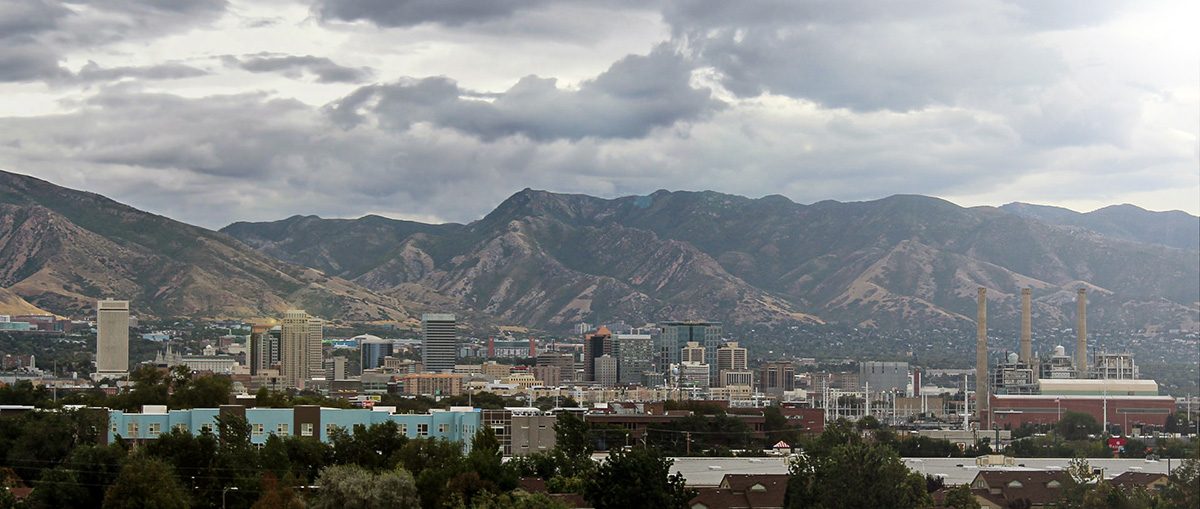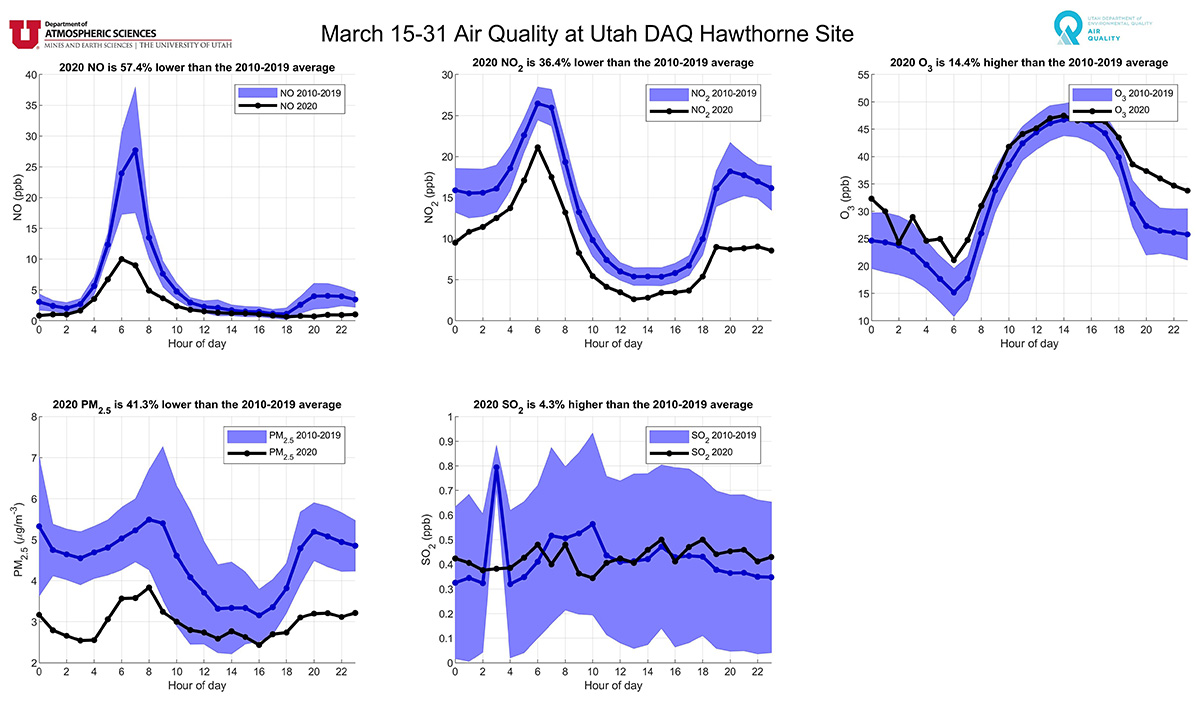
By Jared Mendenhall
Springtime along the Wasatch Front was remarkably different this year. The weather and the flowers were familiar. The breakout of the COVID-19 virus, however, dramatically altered the public landscape.
According to the Utah Department of Transportation, stay-at-home orders, teleworking and social distancing drove traffic volumes down nearly 40% at times across the state. This begged the question, what impact did fewer cars on the road have on air quality?

Looking to answer this question, Logan Mitchell, a research assistant professor in the Department of Atmospheric Sciences at the University of Utah, analyzed data from the Utah Department of Environmental Quality’s Division of Air Quality air monitoring stations along the urban corridors of Northern Utah. Preliminary results from Mitchell’s study was released last week and provided a glimpse of what are air quality could be like with fewer automobiles on the road.
For his study, Mitchell took measurements of all air pollutants from DAQ’s monitoring station at Hawthorne Elementary in Salt Lake City. Additional measurements of carbon dioxide came from monitoring stations in Sugarhouse, at the University of Utah and in the southwest corner of Salt Lake Valley. The measurement period covered the last half of March—when most of Utah’s physical-distancing measures were in effect.
The results are some of the first to integrate ground-based air quality and greenhouse gas emissions with satellite observations to understand how emissions changed during the coronavirus pandemic.

Preliminary results from the study found:
- NOx (oxides of nitrogen) levels were lower due to traffic reductions, especially during rush hour peaks. Nitric oxide (NO) levels were 57% lower than the average March, and nitrogen dioxide (NO2) was 36% lower than average.
- O3 (ozone) is about the same as usual at midday but slightly elevated at night. This is characteristic evidence of less NOx in the air and less reaction between NOx and ozone at night. It’s consistent with what scientists think urban air would look like with decreased NOx emissions.
- PM2.5 (particulate matter) is down by 59%, particularly at night. It’s not clear yet whether that’s due to reduced overall particulate matter emissions or reduced formation of particulate matter through atmospheric chemistry.
- CO2 (carbon dioxide) levels are at 19% and 33% lower than average at the Sugarhouse and U stations, respectively.
- SO2 (sulfur dioxide) is around typical levels. Mitchell says this isn’t surprising, as there aren’t many SO2 sources in the Salt Lake valley.
More analyses are forthcoming. The data have not yet been peer-reviewed. Also, analyzing the weather conditions from March 2020 will provide a more complete picture of how emissions compare to previous years. These measurements, however, paint a consistent picture of cleaner air from reduced emissions.
While the data from this once-in-a-lifetime study was positive, it’s impossible to ignore that many driving habits will eventually revert back to their pre-COVID-19 levels.
But was it really a once-in-a-lifetime event?
There are countless ways Utah residents can reduce automobile emissions and prevent air pollution. We don’t need to return to our old routines. Stay-at-home orders have shown the viability of alternatives like teleworking and trip-chaining. Commuters can also practice TravelWise strategies like carpooling. Also, Northern Utah has a great public transit system that will continue to run long after we all return to work.
“These results give me a lot of optimism about the future,” Mitchell said. “It shows that as we recover from the pandemic if we invest in clean energy and electric vehicles, it’s possible to clean up the air.”
- Read the full report of preliminary results, including images.
- Find current air quality conditions from the Utah DEQ.
- Measurements from stationary and mobile air-quality monitors through the University of Utah.

I am a public information officer for Utah DEQ and a former marketer and magazine editor. Follow me on Instagram @Jarv801.

